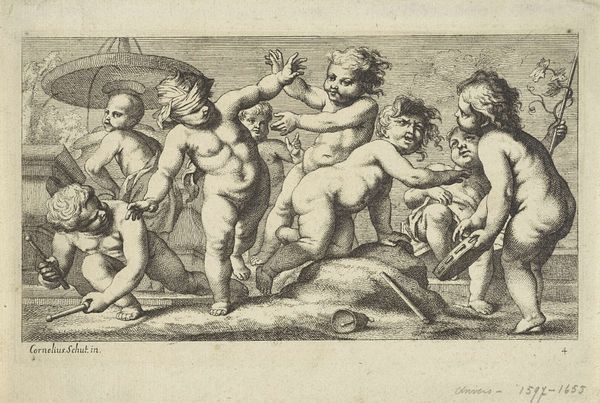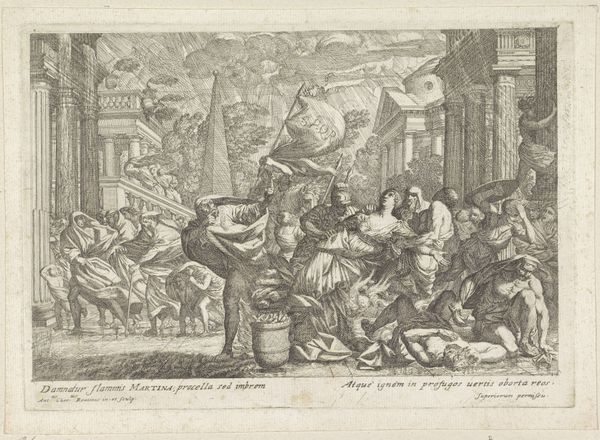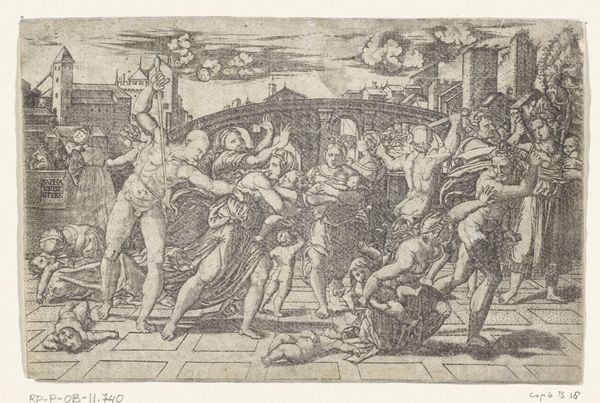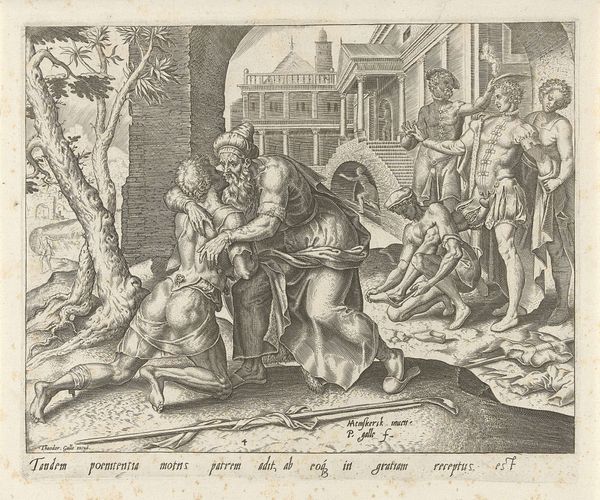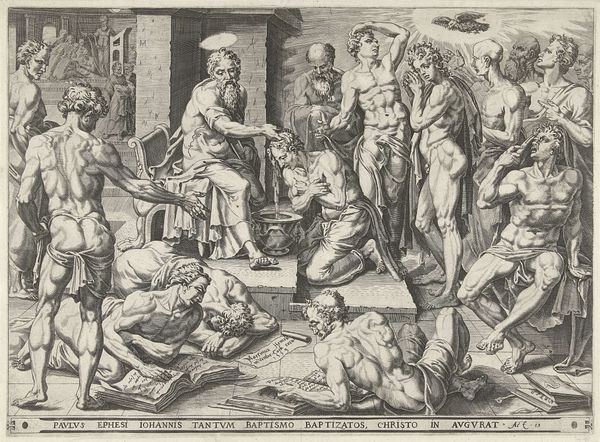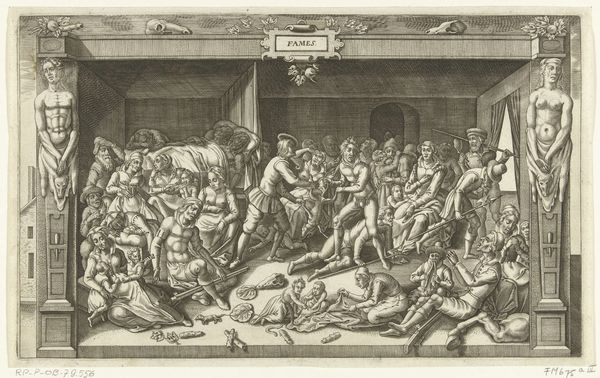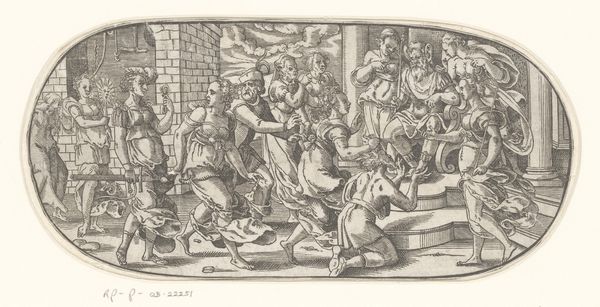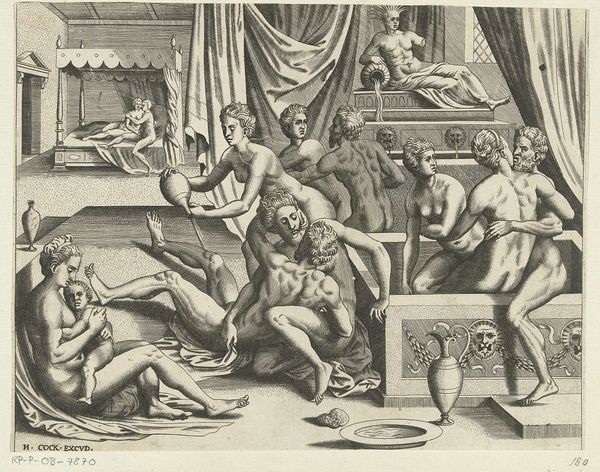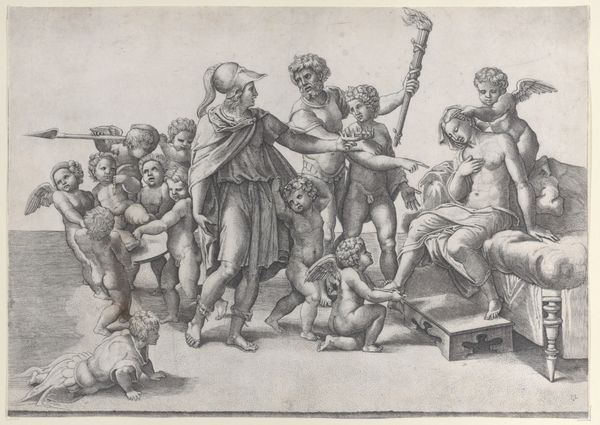
etching, engraving
#
allegory
#
baroque
#
etching
#
old engraving style
#
figuration
#
engraving
Dimensions: height 73 mm, width 117 mm
Copyright: Rijks Museum: Open Domain
This etching of "Putti in een bokkenwagen" was created by Paul van Somer II in the Netherlands, around the turn of the 18th century. It depicts a riotous procession of cherubic figures pulling a cart led by goats, with classical architecture in the background. This seemingly whimsical scene provides us with a glimpse into the culture of the period. In the Dutch Golden Age, the artistic and cultural institutions were dominated by the wealthy merchant class. Allegorical prints like this one were popular, reflecting the patrons' taste for classical themes. However, the unruly putti and chaotic energy also suggest a subversion of the established order. The print may be seen as a commentary on the social structures of its time, perhaps subtly critiquing the excesses and pretensions of the elite through its playful imagery. To truly understand this artwork, we can research the artist's biography, the socio-political context of the Dutch Golden Age, and the symbolism of classical imagery. Only then can we appreciate the full meaning of the artwork, as its meaning is contingent on its social and institutional context.
Comments
No comments
Be the first to comment and join the conversation on the ultimate creative platform.
